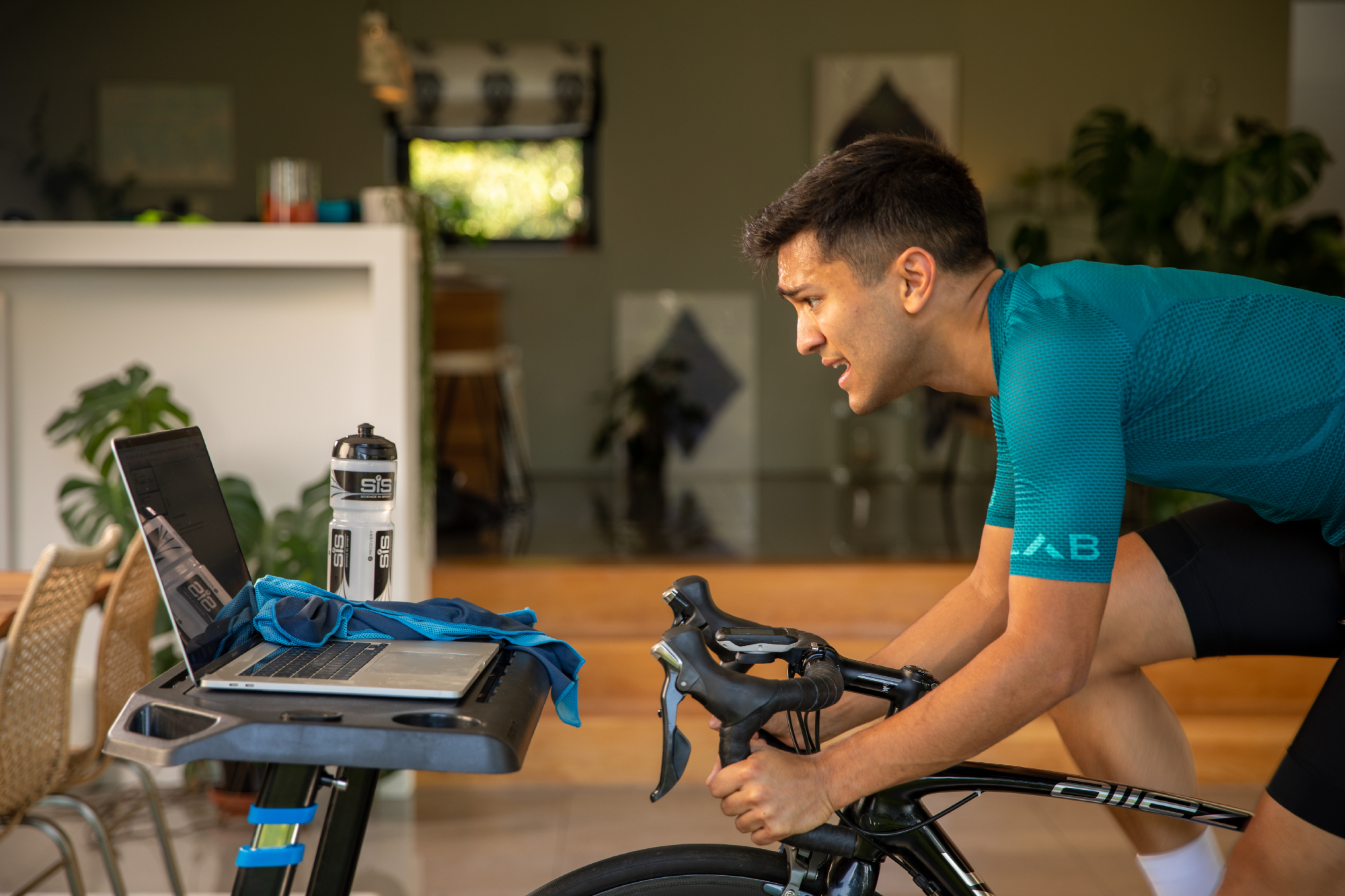Ask a coach: ‘Should I be doing my Zwift sessions in ERG mode?’
Is ERG mode a shortcut to watt-perfect workouts? Or are you losing out on gain by relinquishing control?


Do you ever find yourself with a burning question you’d like to directly ask a cycling coach? Well, now is your chance to ask away! In this series, we’ll be putting your questions to expert coaches – send them in to Cycling Weekly's Fitness Features Editor at anna.abram@futurenet.com
ERG mode is a mode on your smart trainer whereby the trainer dictates the power you ride at. It will automatically adjust for the cycling cadence you are using at and so there is absolutely no shirking when riding in ERG mode.
We’ve asked cycling coach James Spragg to talk through the pros and cons of using ERG mode on the best indoor training apps such as Zwift, and whether or not he would recommend using it or not for maximising on fitness gains.

Sports scientist and coach James Spragg is one of the experts who will be answering your questions in Cycling Weekly's ASK A CYCLING COACH series which comes out every Wednesday. Working both in research and applied settings, he currently runs Intercept Performance Consultancy.
Pros of using ERG mode in Zwift

Control
ERG mode is the mode that I will use when I do some (but not all) performance tests with athletes. If I want to do a time to exhaustion test, a lactate profile, or a VO2 max test then I will use ERG mode as it allows me to perfectly control the power an athlete is riding at. Likewise, when riding in ERG mode there is absolutely no getting out of doing those intervals. The best smart turbo trainers will simply dictate that you must complete the session at a fixed wattage and that’s that. If you are the kind of person that wants to switch off their brain and just pedal, then erg might sound like a dream solution.
The other bonus is that in more complicated interval sessions there is no remembering what you need to do. Your coach can program the workout and it can be uploaded to whatever platform you are using.
Cons of using ERG mode in Zwift

While for some specific performance tests, ERG mode is undoubtedly the way to go, what about everyday training? Spoiler alert, I am not a fan and don’t advise the athletes I work with to use ERG mode. Here’s why:
The latest race content, interviews, features, reviews and expert buying guides, direct to your inbox!
I don’t want to limit my athletes
To use ERG mode I need, as a coach, to decide the exact wattage at which an athlete is going to complete an effort. However, the exact power that an athlete is capable of in each set of intervals on any given day may fluctuate by ~2-3 per cent. It may even change from morning to evening. Therefore, I don’t like to prescribe an exact power value as it might not be high enough if one of my athletes is on a very good day and may be too high if they aren’t at their best.
Likewise, there is ~1 to 2 per cent variation in even the best power meters - this means to prescribe an exact power value not only would I need to know how an athlete feels, what time of the day they are doing the session, how well they slept etc, but, I would also need to know if their power meter was reading generously that day.
It’s not like the real world
Most of us want to perform in the real world (rather than the virtual one). Out on the open road the way in which we put out power is quite different to how we put out power in ERG mode. On the open road we see quite a lot of fluctuation in power as we go over small changes in gradient, move from smother to rougher sections of road and get hit by gusts of wind. All this means that the power output even in the most well-paced TT is still quite variable, especially on a pedal stroke to pedal stroke basis (NB, this is also why most training platforms apply a smoothing factor to your power meter data). What I have personally found is that if athletes use ERG mode excessively then putting out power on the road can actually start to feel quite different to what they are used to. This means that there is an adaptation period needed for them to feel good and comfortable putting out bignumbers on the open road.
The verdict
While ERG mode has its place, for me that place is only during specific performance tests that need to be controlled in order to get valuable data. I personally think it makes more sense to give athletes a range of powers and let them decide exactly where they ride in the range.
James Spragg is a sports scientist and coach, working both in research and applied settings. When not working with athletes James can be found skiing, climbing, cycling or drinking coffee!
Alongside Dan Lorang and Peter Leo, James runs Intercept Performance Consultancy. Over the last 8 years in various roles, as coaches, performance consultants, performance managers, and sports scientists, Dan, James and Peter have played a role in helping athletes achieve more than 10 World Championship titles, several Olympics medals (including a Gold and Silver Medal in Tokyo 2020) and several Top 5 results in some of the biggest sporting events on the planet (Tour de France, Olympics, World and European Championships). Our single focus is on improving performance in all settings.